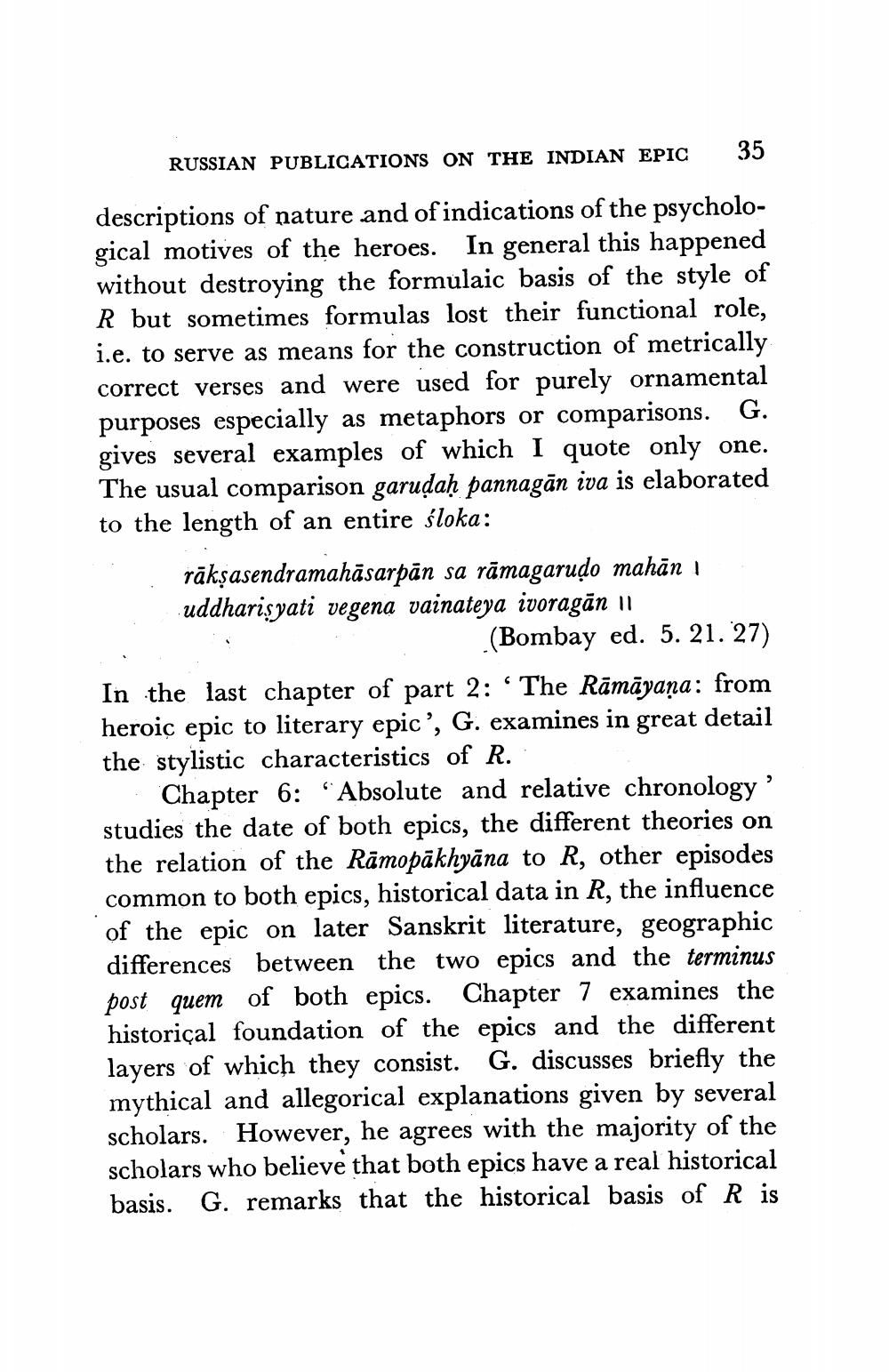________________
RUSSIAN PUBLICATIONS ON THE INDIAN EPIC
35
descriptions of nature and of indications of the psychological motives of the heroes. In general this happened without destroying the formulaic basis of the style of R but sometimes formulas lost their functional role, i.e. to serve as means for the construction of metrically correct verses and were used for purely ornamental purposes especially as metaphors or comparisons. G. gives several examples of which I quote only one. The usual comparison garudaḥ pannagān iva is elaborated to the length of an entire śloka:
rākșasendramahāsarpān sa rāmagarudo mahāni uddharisyati vegena vainateya ivoragān 11
(Bombay ed. 5. 21. 27) In the last chapter of part 2: The Rāmāyaṇa: from heroic epic to literary epic', G. examines in great detail the stylistic characteristics of R.'
Chapter 6: “Absolute and relative chronology' studies the date of both epics, the different theories on the relation of the Rāmopākhyāna to R, other episodes common to both epics, historical data in R, the influence of the epic on later Sanskrit literature, geographic differences between the two epics and the terminus post quem of both epics. Chapter 7 examines the historical foundation of the epics and the different layers of which they consist. G. discusses briefly the mythical and allegorical explanations given by several scholars. However, he agrees with the majority of the scholars who believe that both epics have a real historical basis. G. remarks that the historical basis of R is




